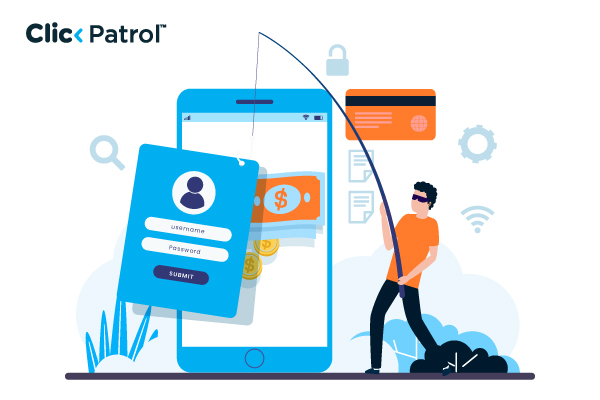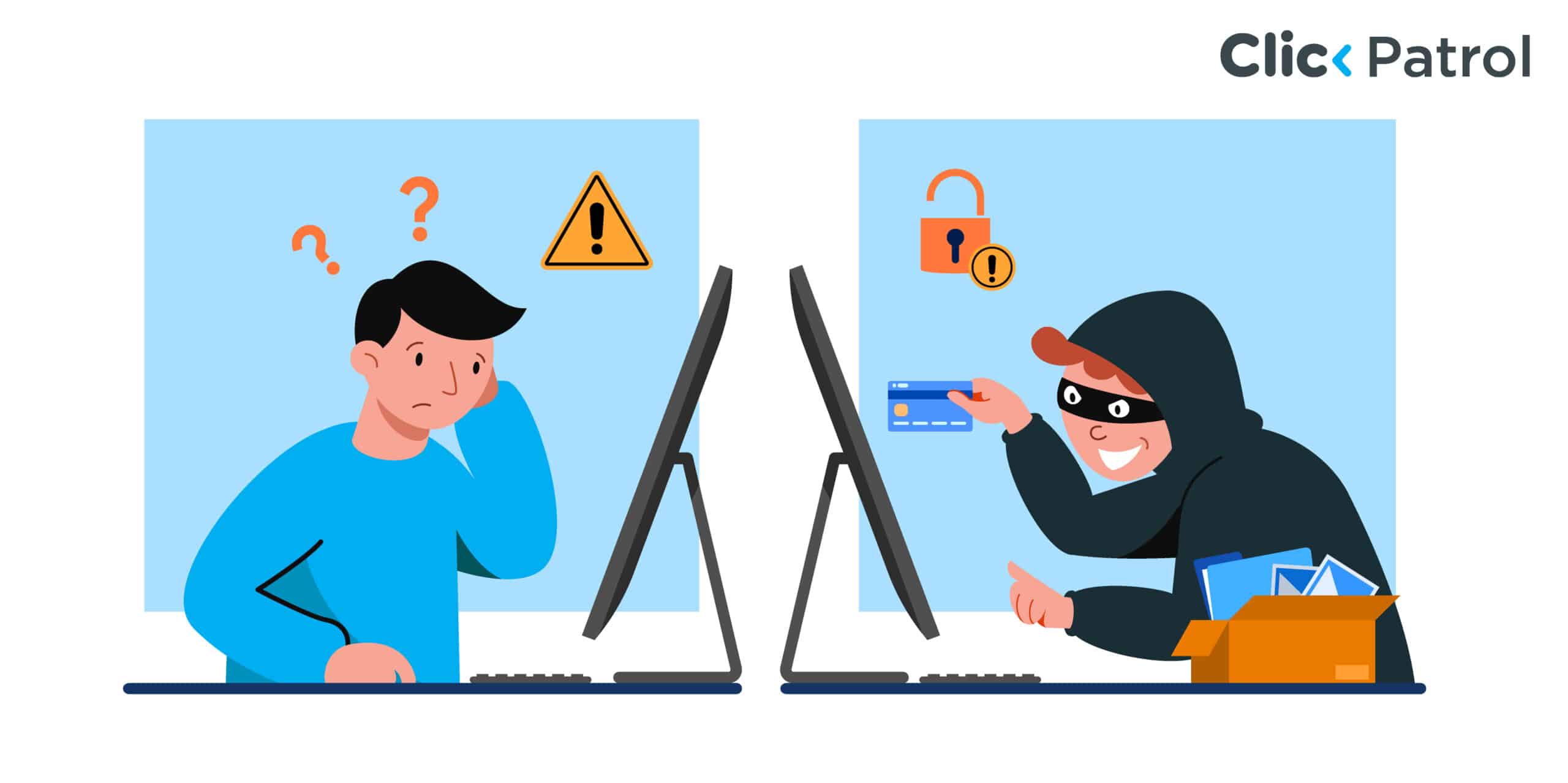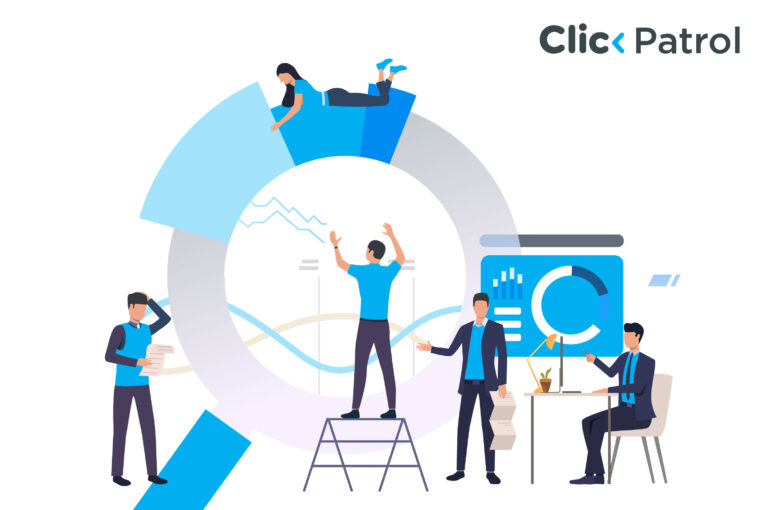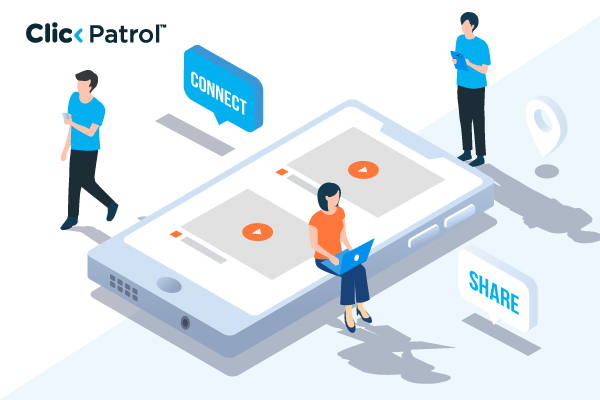
Fake Click Activity: How to Detect, Prevent, and Stop Fake Click on Your Ads
Abisola Tanzako | Feb 21, 2025

Table of Contents
- What is fake click activity?
- The scale of fake click activities.
- Industries hit hardest by fake click activities.
- Types of fake click activities.
- The impact of fake click activity.
- Detecting fake click activity.
- Preventing fake click activity.
- Best fake click prevention tools to stop fake clicks.
- Real-world example: Protecting ad spending with ClickPatrol.
- The way forward.
- FAQs
Businesses invest billions of dollars yearly in digital advertising to reach prospective customers. However, most of this investment has gone to waste due to fake click activity, which is more popular than an actual click. This recurring issue threatens to distort metrics, waste advertising budgets, and ruin trust in advertising platforms.
Statista forecasts that fraudulent advertising, including fake clicks, will exceed $100 billion globally in 2024 and could reach $172 billion by 2028, growing about 14% annually. In 2020, bots and fake users accounted for 54.6% of mobile ad fraud. This article explores how fake click activity works, how to detect fake clicks, its impact, and strategies to protect your ad spend.
What is fake click activity?
Fake click activity refers to fraudulent interactions with online advertisements, where clicks are generated without genuine interest in the advertised product or service. These deceptive practices, often carried out by bots or click farms, distort crucial metrics such as click-through rates (CTR) and significantly deplete advertising budgets.
The scale of fake click activities.
According to a report by Statista, the scale of fake click activities is huge. The report stated that 14 -15.6% of all ad views worldwide are fake, drastically decreasing the credibility of web advertising campaigns. Therefore, businesses worldwide lose $100 billion annually. These statistics are not just numbers; they signify substantial financial losses, lost opportunities, and a severe loss of confidence in digital advertising platforms, so they should be an industry priority today.
Industries hit hardest by fake click activities.
While fake click activity affects all advertisers, industries with high CPC rates bear the brunt of the impact. Sectors like:
- Finance: Loans, credit cards, and investments keywords can run an advertiser over $50 per click, so once fraud occurs, the financial losses amplify.
- Insurance: With some CPCs over $100, fake clicks quickly impact budgets and hammer campaign ROI.
- Legal services can be experienced in law firms, especially in very competitive niches like personal injury law.
Types of fake click activities.
Understanding the different forms of fake click activity is important in the fight against it. Here are the main types of fake click activities:
- Click farms: These operations involve people clicking advertisements to simulate real traffic. They are usually based in regions with low labor costs, enabling fraudsters to operate efficiently. Click farms generate a high volume of fake clicks, inflating metrics with no real value to advertisers.
- Bot traffic: Bots are automated programs that mimic human actions to generate traffic traffic on a large scale. Statista estimates that 45% of internet traffic was bot-driven in 2023, with a considerable for that trafficking fake click sticks. Advanced bots today can emulate very similar behavior to real users, making them much more challenging to find using traditional techniques.
- Competitor click fraud: occurs when companies in the most competitive sectors intentionally click their competitors’ ads to exhaust their advertising budgets. This unethical practice causes financial damage and decreases the ad visibility of the victim’s business.
- Click injection: Scammers inject fake clicks using malware to scam affiliate marketing programs. By taking credit for the driven conversions, fraudsters artificially inflate their commission by expanding their numbers and cheating genuine advertisers of fair results.
Ad stacking is a method in which multiple ads are layered within one ad placement. Here, viewers see only the topmost ad while the rest is underneath; it only records the click. Advertisers usually do not catch such practices and eventually lose hundreds of thousands. - Pixel stuffing: The fraudsters utilize invisible pixel ads for the user’s view. Hidden pixels are used in websites and apps that automatically fire to register the impression and click. While invisible to users, advertisers pay for the fake interactions, which causes performance metrics to go out of whack.
- Impression laundering involves delivering ads on low-quality or non-reputable websites that are camouflaged as high-quality traffic sources. Fraudsters tamper with ad exchanges to make the traffic appear legitimate, sometimes registering fake clicks and impressions.
The impact of fake click activity.
Fake click activity is more than a nuisance. The aftershocks of such practices repeat themselves in many aspects of digital advertising, eroding the value of ad spending and damaging business outcomes.
- Biased analytics: Fake clicks inflate significant campaign metrics like CTRs, conversion rates, and levels of engagement. Inflated metrics can lead to incorrect assumptions about campaign performance. Thus, a marketer may continue with the wrong strategy, further aggravating the budget waste.
- Reduced ROI: Fake clicks cut into budgets that could be used to target actual customers, thereby causing an absolute decrease in Return on Investment (ROI). With less funding for actual engagement, businesses find it challenging to reach their revenue targets.
- Loss of reputation and trust: Advertisers will stop trusting those channels when illicit clicks start sticking to ad platforms. Small businesses and startups may feel demoralized by this process and begin to rely less on digital advertising.
- Wasted operational resources: Time and effort that could be invested in business are wasted sorting through distorted metrics and dealing with fake clicks.
- Competitor exploitation: Businesses operating in industries where competitor fake clicks are rampant are at an unfair disadvantage because competitors purposely deplete their ad budgets.
Detecting fake click activity.
Identifying fake activity requires a combination of tools and analysis.
- Click behavior: Session Duration and Repeated Patterns Analysis will help you spot strange behaviors, such as swift visits or excessive repetitions.
- Monitoring: the repetition of clicks from the same IP address can determine the origins of IP addresses.
- Geo-location information: Most fake clicks come from very risky areas. Blocking this traffic will reduce the risks.
- Detection tools like ClickPatrol can provide advanced monitoring and in-depth reports to identify and block fake clicks.
Preventing fake click activity.
Ways to prevent fake clicks include:
- Use detection software: ClickPatrol monitors campaigns and blocks invalid traffic without delay.
- Regularly update IP exclusions: This will block clicks from known fraud sources by maintaining and updating IP blocklists.
- Campaign metrics monitoring: Scrutinize the engagement data for suspicious patterns indicating fraud and take immediate action.
- Educate your team: Train your marketing team to detect fake clicks and take quick measures.
- Multi-layered approach: Effectively deploy software solutions against fraud hand in hand with manual monitoring and active engagement.
Best fake click prevention tools to stop fake clicks.
Due to its advanced algorithms and monitoring, ClickPatrol offers the best protection against fake clicks. It identifies fake clicks and blocks them, thus providing detailed reports on how best to utilize ad budget and minimize ad expenses. Other well-known tools include ClickGuard, ClickCease, and PPC Protect, each of which has unique features that will help to protect your campaigns from invalid traffic. Ensure your ad reaches real readers and optimize ROI by investing in the best solutions for fake click prevention.
Real-world example: Protecting ad spending with ClickPatrol.
A fashion retailer with a lot of problems related to fake clicks, a company involved in environmentally friendly products, and so many advertisers with common challenges such as inflated ad costs and skewed performance metrics integrated ClickPatrol and saw a tremendous change:
- 58% more time on page
- It decreased 14% in its non-human traffic.
- Saved $1,940 in ad spend
Before using ClickPatrol,
- Giordano experienced high bounce rates and low user interactions. After implementing ClickPatrol, bot traffic was prevented, leading to a 58% increase in time spent on the page.
- Conservio faced inaccurate and inflated ad metrics. With ClickPatrol, non-human traffic decreased, improving ad metrics by 14% and saving $1,940 in ad spend.
- Various users struggled with inflated ad costs. ClickPatrol ensured ad budgets were spent efficiently, resulting in an average 29% increase in savings on ad spend.
The above highlights how proactive the ClickPatrol tool is in significantly enhancing ad performance.
The way forward.
This fake click activity remains entirely unabated and drains billions of dollars annually, distorting marketing insights as well. Nevertheless, businesses with awareness, robust strategies, and advanced tools like ClickPatrol are best poised to shield this ad investment and improve the return on investment (ROI). Marketers can safeguard their campaigns to reach real customers if they remain vigilant and proactive.
FAQs
Q. 1 Which industries are vulnerable to fake click activities?
Industries that have higher CPC include financial, insurance, and legal services.
Q. 2 How much do companies save after deploying tools such as ClickPatrol?
This alone can help businesses save 30-40 percent of their advertising budget by eliminating all fake clicks.
Q. 3 Can fake clicks be rooted out altogether?
While it is difficult to eliminate, tools like ClickPatrol significantly reduce its effect and ensure that ad spending flows into actual engagement.





